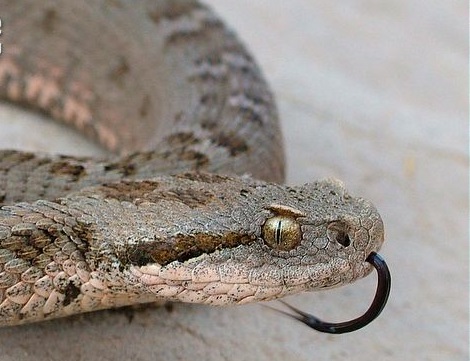
Endangered Species: Lebanon viper (Montivipera bornmuelleri)
A venomous snake, the Lebanon viper (Montivipera bornmuelleri) is an extremely rare species. There is limited information on its appearance, though members of the Montivipera genus are generally known to be short-tailed species. They also have a low number of enlarged scales on the underside of the tail, and all Montivipera species share a similar fragmented dorsal pattern. The pattern includes a number of dark blotches along the body, the central area of which can be lighter in colour in the Lebanon viper. The tail of the Lebanon viper has a yellow tip.
Biology
Very little is known about the biology of this rare species, although the Lebanon viper is likely to have aspects in common with other members of the viper family (Viperidae). Vipers are generally ambush predators, striking their prey with long, hollow fangs which they use to inject venom. The fangs are hinged, and are folded back against the roof of the mouth when not in use. Vipers may also strike in self-defence. The female Lebanon viper is ovoviviparous, and gives birth to between 2 and 18 young.
Range
The Lebanon viper is known to occur in Lebanon and Syria at elevations between 1,000 and 2,200 metres.
Habitat
The Lebanon viper is known to inhabit mountainous areas where its preferred habitat includes cedar forests and alpine grasslands. It can be found among rocks as well as cushion-type vegetation.
Status
The Lebanon viper is classified as Endangered (EN) on the IUCN Red List.
Threats
The Lebanon viper has a restricted range and is therefore vulnerable to habitat degradation. Its habitat is currently threatened by overgrazing by domestic livestock and the use of off-road vehicles.
In parts of its range, the Lebanon viper is threatened by the development of its habitat for the military and also the ski industry.
Conservation
While there are currently no known conservation actions specifically targeting the Lebanon viper, it is known to occur in protected areas in both Lebanon and Syria. Recommended conservation actions for this species include the management of its remaining habitat.
